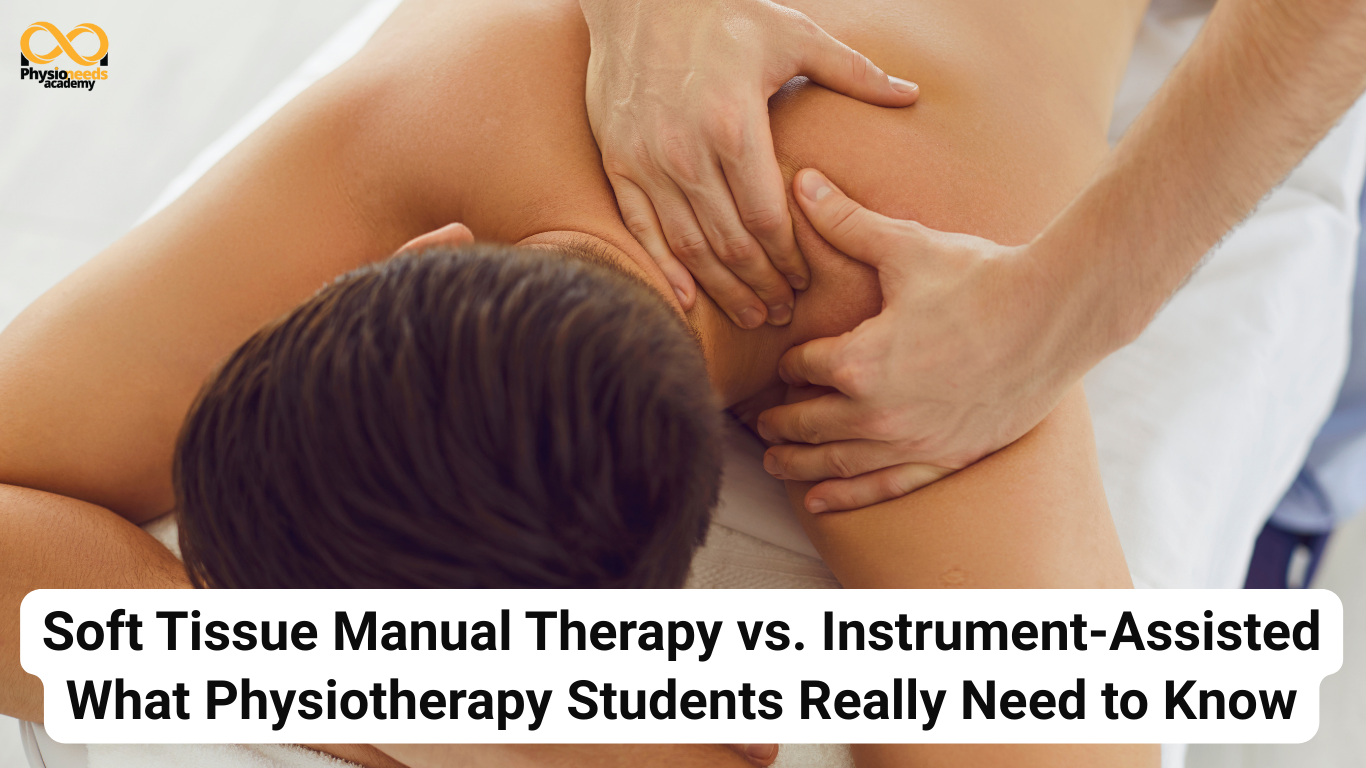There are no items in your cart
Add More
Add More
| Item Details | Price | ||
|---|---|---|---|

Soft tissue manual therapy (STM) is exactly what it sounds like—using your hands to treat muscles, fascia, and connective tissue. Some common techniques include:
Instrument-assisted soft tissue mobilization uses special tools—typically stainless steel, plastic, or other ergonomically designed instruments—to apply pressure and mobilize tissues. Popular techniques include:
Looking to specialize? Check out our IASTM Training Workshops to gain practical skills with the latest tools.
| Factor | Manual Therapy | Instrument-Assisted Therapy |
|---|---|---|
| Tools | Hands only | Stainless steel/plastic instruments |
| Feedback | Direct, tactile feedback | Amplified detection of adhesions via tools |
| Therapist Comfort | Can strain hands/wrists | Reduces physical fatigue |
| Patient Experience | Gentle to moderate pressure | May feel more intense, sometimes mild bruising |
| Best For | General muscle tension, acute pain | Chronic conditions, scar tissue, deep restrictions |
✅ Builds strong therapist-patient rapport
✅ Great for relaxation and immediate pain relief
❌ Physically demanding for the therapist
❌ Less efficient for stubborn or chronic adhesions
✅ Allows deeper, more targeted treatment
✅ Protects therapist from overuse injuries
❌ Can be uncomfortable for sensitive patients
❌ Requires proper training certification
In today’s rehab world, being skilled in both approaches makes you versatile. Some patients prefer the soothing touch of manual therapy, while others benefit most from the targeted power of IASTM.
As a student, here’s what you should focus on:
💡 Want to broaden your expertise? Our Musculoskeletal Physiotherapy Courses cover both manual and instrument-assisted methods in depth.
1. Is instrument-assisted therapy more effective than manual therapy?
Not necessarily. Both have their place. Manual therapy works best for relaxation and acute issues, while IASTM is more effective for chronic conditions, scar tissue, and deeper adhesions.
2. Do physiotherapy students need certification for IASTM?
Yes. While manual therapy is part of your core curriculum, most IASTM methods (like Graston or HawkGrips) require specific certification courses.
3. Can I use both manual and instrument-assisted techniques together?
Absolutely. Many physiotherapists combine both approaches for the best outcomes, starting with manual therapy and finishing with IASTM for stubborn restrictions.
4. Which technique is easier to learn as a beginner?
Manual therapy is usually introduced first since it builds palpation skills and tissue sensitivity. Once you’re confident, IASTM becomes a natural extension.